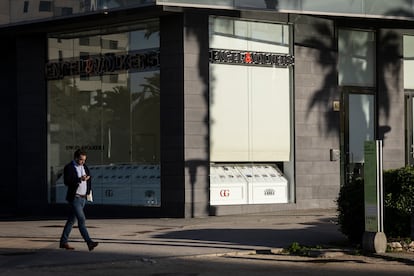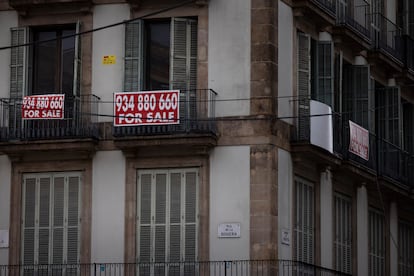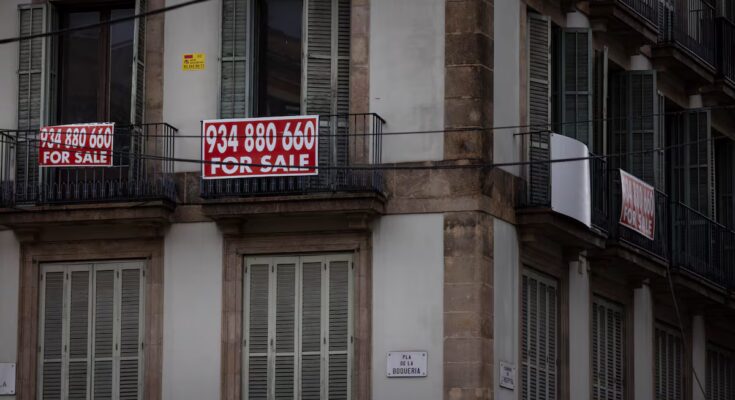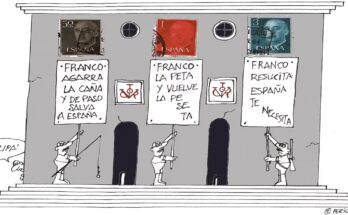Purchases and sales of homes by foreigners in Catalonia do not stop growing and have increased by 23% in the last three years (21,642 homes in 2024). From January to June this year, sales by private individuals in this group are already 11,404, 19% of the total, according to data from the College of Notaries of Catalonia, which speaks of a “historic peak”. In the province of Girona the percentage rises to 24%. Of these transactions, 78% are carried out by foreigners resident in Catalonia (people born abroad with a residence permit) and 22% by non-residents, who are investors or looking for a second residence. Its profile is very different: the main established buyers are of Moroccan, Italian and Chinese nationality; The non-residents who purchase homes the most come from France, Germany and Holland. These buyers also purchase properties 24% more expensive than the average home price.


As usual, the city of Barcelona and its province eat separately: in the Catalan capital, since 2021 the sales of apartments by non-residents have doubled: if in 2021 they purchased 566 apartments, in 2024 they were 1,229. As of June this year there were 517 homes. The main nationality of non-residents is that of the United States, despite the end of the Golden visathe Government program which until March granted residence permits to non-EU foreigners who invested in houses starting from half a million euros. In the province as a whole, among residents, the main buyers come from Italy, China, Morocco and France.


Outside Barcelona, in 2024 and in the first half of 2025, the foreigners residing in Girona who buy the most are Moroccans, French, Italians and Romanians. And non-residents, from France, the Netherlands and Germany. In Tarragona these nationalities are repeated among non-resident buyers, while those who already live in the province who purchase the most are citizens of Morocco, Romania, Italy and Ukraine. In Lleida the residents include Moroccans, Romanians, Italians and Ukrainians; and non-residents are French, Argentinians, Andorrans and this year French, Americans and Belgians. Furthermore, Catalonia leads the increase in purchases by foreigners in Spain and is the community where they produce the most, with 15% of the country’s total.

“Historical peak of shopping”
The vice-principal of the Catalan notaries, Raquel Iglesias, underlines that Catalonia “is in a historic peak of purchases” linked to two factors. On the one hand “the roots of people of foreign nationality, who arrived a long time ago and who want to stay and buy like the locals”. And on the other hand, a “recovery of foreign investments after years of certain political and legal uncertainty which has calmed down; the necessary tranquility that the market is trying to make investments attractive has returned”. In general, even if notaries do not have detailed data, Iglesias underlines that resident foreigners purchase with a mortgage, while non-residents do not finance operations “because it is very complicated for an institution here” to lend them money.
To this phenomenon, adds the vice-principal, must be added the purchases made by people born in other countries who have been in Catalonia for some time and have just obtained Spanish nationality. «We notaries swear a lot on nationality and there is a notable percentage of these cases who then buy a house, another sign that they intend to stay with the family», he observes.
Traditional real estate agencies have witnessed these changes in clients as professionals and spectators. The director of the Forcadell Residential Area, Raúl Prieto, mentions a nationality interested in buying in Barcelona that does not yet appear in the notarial statistics: Turkish investors. Like the other respondents, Prieto underlines “the high level of preparation of foreign customers who buy to invest”. “They come with personal shoppers (as happens in Madrid), lawyers who know the legislation and consultants,” he says. And, even if they barely negotiate prices, they demand to check that everything works, down to the last detail. “They asked us to turn on the heating,” he cites as an example.

In the case of Barcelona, he specifies, there are French people interested in the Raval and Ciutat Vella in general, “areas they feel attracted to”. And as for buyers residing in China, he explains that “they are looking for houses close to their activities, usually hospitality or commercial”. “Sometimes they rent and buy as the family grows, or they already own and buy larger apartments,” he says. The vice-principal of notaries adds, in the case of the Chinese, that “it is a community that has had difficulty understanding the Spanish legal and tax system, but is very organised, with its own associations which they consult”. In fact, in Barcelona, in the most populated areas and with the most commercial activities managed by Chinese citizens, real estate agencies have opened for the community.
The deputy general director of Don Piso, Emiliano Bermúdez, highlights the correlation between the presence of a population of migrant origin and their settlement in the Catalan territory with the purchase of homes. He mentions “many Moroccans living in Lleida linked to agriculture, French in Girona looking for the Costa Brava or the surroundings of Girona, and numerous colonies of Romanians on the Costa Dorada (Tarragona) and also in Lleida”. In Barcelona Bermúdez sees an increase in Italian buyers with a certain purchasing power, who reach 20% of purchases. And he observes a clear segmentation based on income: “Foreigners who reside here purchase medium and low segment homes and the area is less important than for the native population: many times in their life history they have lived where they could and the location of the house does not have the aspirational or status weight that it may have for locals; while non-residents acquire the medium and upper segment in Barcelona or on the coast.”

Boom in homebuyers in America
Federico Sotelo, partner of the real estate agency specialized in high standing Walter Haus highlights the phenomenon of the boom in home buyers from the United States. “They have skyrocketed in the last three or four years, for a number of reasons: there was a moment of euro-dollar parity, and it paid off very well; then the Golden Visa, and now also for political reasons,” after Donald Trump’s return to the presidency. The profiles are also different. And he mentions «North Americans coming from the big cities of California or Miami, over-50s who are looking for a second residence with retirement in mind, or who want a base in Europe from which to leave and Barcelona has positioned itself like other European capitals such as London or Paris, or who choose the city because for them it is small, safe, where they can go out in the evening to have dinner or go to the beach». Some call it what is known in the industry as “pied-à-terre“, Sotelo specifies: “An investment as a second residence or to rent, until retirement or thinking that their children can come to study at university”.
Regarding foreigners already resident in Barcelona who buy houses worth 800 thousand euros or one million, he mentions “the historical ones: Belgians, French, Germans who have acquired a lifestyle in the city and decide to buy”. And entrepreneurs of Chinese origin are added, looking for large houses, or even from Morocco. The Walter Haus partner recalls, however, two profiles of non-resident foreigners who had had weight and lost it: Russians or Ukrainians.



